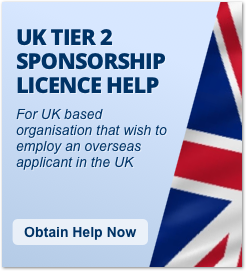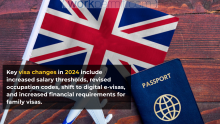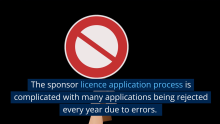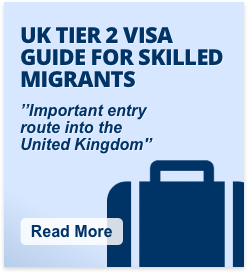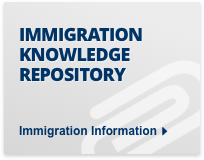Support migrant centric journalism today and donate

By Sanwar Ali:
Canada recently launched a new immigration initiative aimed at attracting U.S. H1B visa holders. As part of the country's first-ever Tech Talent Strategy, the Canadian government announced the creation of an open work permit stream to enable work for any Canadian employer, for H1B visa holders residing in the U.S. This move has stirred considerable interest and speculation across the globe. In this article, we delve into the specifics of this new Canadian visa scheme, its potential implications, and the challenges it may face.
The New Canadian Visa Scheme for H1B Holders: An Overview
The new Canadian visa initiative is primarily designed to lure tech professionals currently working in the U.S. under the H1B visa program. The H1B visa enables U.S. employers to temporarily employ foreign workers in specialty occupations.
As part of Canada's Tech Talent Strategy, the Canadian Immigration Minister revealed plans to allow 10,000 H1B visa holders from the U.S. to work in Canada. The initiative also extends to their family members, providing them with study or work permits.
The program is slated to commence on July 16, 2023. Approved applicants will receive an open work permit valid for up to three years. This permit will enable them to work for any employer across Canada, thus providing them with increased flexibility and opportunities.
Potential Challenges for the Canadian Visa Initiative
While this new Canadian immigration scheme shows potential in attracting top tech talent, as mentioned by Boundless, it may face certain obstacles in drawing skilled workers from the U.S. These include:
- Lower Salary Rates in Canada: Salaries in Canada tend to be lower than the US. However, comparing purchasing power can be complicated. For example, the US has the highest healthcare costs in the World. Canada has free health care.
- Many of the World's top IT companies are from the US: Well-known US tech companies including Microsoft, Apple, and Alphabet (Google) were founded in the US, and have their headquarters based there. Major tech hubs include Silicon Valley, Seattle, and Austin. The resources, networks, and infrastructure available in these hubs may still be more attractive to tech talent and entrepreneurs.
- Strong preference for USA instead of Canada: The US is the largest economy in the world, and the most important country in the World for innovation in IT and technology. IT people from India and elsewhere will most likely consider the US as having the most opportunities for career development. Many IT people may move to Canada in the hope that it may make it easier at a future date to gain entry to the US. Canadian citizens can obtain US visas more easily, such as the TN visa for NAFTA professionals, and benefit from easier processing of L1 visas. IT professionals may think of moving to Canada as a temporary move.
- Only 10,000 Canadian visas available: The new program will remain in effect for one year or until 10,000 applications are received. The number of visas available is therefore quite small.
What should the US do now?
The US can try and reform the immigration system. However, in practice significant reform seems unlikely. It is very difficult putting through immigration legislation that will make it easier for migrants to work in the US.
It is unlikely that the U.S. will be left with a dearth of tech workers due to the new Canadian work visa system. Ten thousand work visas is in reality an insignificant number, and will not make much of a difference.
Who Qualifies for the New Canadian Visa Program?
While the new Canadian visa program has garnered significant media attention, there are still a few open questions regarding eligibility.
According to the announcement, the program is open to H1B specialty occupation visa holders in the U.S. However, not all H1B nonimmigrants in the U.S. will hold a valid H1B visa stamp. There are multiple circumstances under which one can be in H1B status, but not possess an H1B visa.
It remains to be seen whether the Canadian immigration authorities will exclude such H1B nonimmigrants from the new work permit program, despite their lack of an H1B visa. Based on the language of the announcement, it appears that they might be excluded. However, Government announcements can sometimes be misleading. Further details should be available when the visa program is launched.
Allocation of the New Work Permits
Another point of uncertainty is how the Canadian immigration authorities will allocate the limited supply of the new work permits. The announcement suggests that they may allocate the 10,000 available numbers for principal applicants on a first-come, first-served basis. However, such a system can result in chaos if more than the allotted number attempt to apply on the first possible day that the visas become available. If this happens, presumably there will be a lottery for the available visas.
Whether the Canadian authorities will adopt a lottery system or a first-come, first-served basis for this new program is yet to be clarified.
Uncertainty Around Eligibility Requirements
A third open question is whether there will be any requirement linked to the length of remaining time in H1B status available to an applicant. The IRCC webpage guidance to high-skilled workers suggests that applicants should choose the program if their U.S. work visa is expiring soon. However, it is unclear whether this is a requirement or merely a recommendation.
The official legal basis for the new work permits, likely to be in the form of a temporary public policy or a Ministerial Instruction, has not yet been publicized by the Canadian immigration authorities. Once this is published, we should have much more detail of the visa system in practice.
Impact of New Canadian Work Visa System
The new Canadian visa system is a good idea, which aims to tap into the pool of highly skilled tech talent in the U.S. However, the impact of this initiative will likely be limited due to the small number of visas available and the fact that the U.S. is a much larger economy with more opportunities than Canada.
While Canada's new strategy may attract some talent. it should not make much of a difference to the US. The US is the most popular immigration destination in the World.
Conclusion
Canada's new visa initiative for U.S. H1B visa holders will most likely be successful in attracting ten thousand visa applicants. However, one significant issue may be that many of these people would much rather be in the US.
As countries compete to attract the world's best and brightest, it will be interesting to see how immigration policies evolve in the coming years.
workpermit.com helps with US Work Visa: L1, H1B, E2, and O1 Visas
There are various types of US visas that individuals can apply for, depending on their circumstances. Some of the most common employment-based visas include:
L1 visa: This visa is for intracompany transferees who work in managerial or executive positions or have specialized knowledge.
H1B visa: This visa is for specialty occupations that require theoretical or technical expertise in specialized fields.
E2 visa: This visa is for investors who have made a significant investment in a US business and, management or essential skills employees. Only certain nationalities can apply.
O1 visa: This visa is for individuals with extraordinary abilities in the arts, sciences, education, business, or athletics.
Workpermit.com is a specialist visa services firm with over thirty years of experience dealing with visa applications. For more information and advice, please contact us on 0344 991 9222 or at london@workpermit.com(link sends e-mail)







